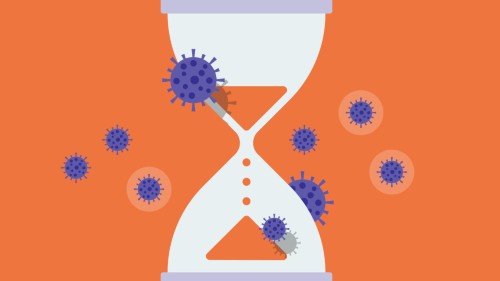Wyva
Senior Member (Voting Rights)
Submission status: Open
Submission deadline: 13 May 2026
This Collection welcomes studies into improving diagnostics and tools to determine disease progression, pathways affected, and clinical interventions, both studies within and across infectious agents of PAIS.
Q-fever, Lyme disease, Legionnaires’ disease, post-sepsis syndrome, and long-COVID are chronic diseases that are collectively known as post-acute infection syndrome (PAIS). PAIS occurs after a person has had an acute viral, bacterial, or parasitic infection. Diagnosis is difficult as the infectious agent is often no longer detectable. Disease symptoms show similarities regardless of the infectious agent, and often includes chronic fatigue akin myalgic encephalomyelitis/chronic fatigue syndrome. Patients often have shortness of breath, and cognitive dysfunction, as well as a complex profile of additional symptoms, including joint pain, sleep problems, and feeling sick (headaches, muscle pain), in addition to any physical issues remaining after the infection has run its course such as scar tissue in the lungs. Symptoms range from mild discomfort to upending lives. All this has hampered diagnosis and efforts to find an effective treatments. Furthermore, it is unclear which risk factors, and combination thereof, puts a patient most at risk of developing PAIS following an infection.
Editors
Sławomir Kujawski, PhD, Snezhina Mihaylova Lazova, PhD & Charlotte Steenblock, PhD

 www.nature.com
www.nature.com
Submission deadline: 13 May 2026
This Collection welcomes studies into improving diagnostics and tools to determine disease progression, pathways affected, and clinical interventions, both studies within and across infectious agents of PAIS.
Q-fever, Lyme disease, Legionnaires’ disease, post-sepsis syndrome, and long-COVID are chronic diseases that are collectively known as post-acute infection syndrome (PAIS). PAIS occurs after a person has had an acute viral, bacterial, or parasitic infection. Diagnosis is difficult as the infectious agent is often no longer detectable. Disease symptoms show similarities regardless of the infectious agent, and often includes chronic fatigue akin myalgic encephalomyelitis/chronic fatigue syndrome. Patients often have shortness of breath, and cognitive dysfunction, as well as a complex profile of additional symptoms, including joint pain, sleep problems, and feeling sick (headaches, muscle pain), in addition to any physical issues remaining after the infection has run its course such as scar tissue in the lungs. Symptoms range from mild discomfort to upending lives. All this has hampered diagnosis and efforts to find an effective treatments. Furthermore, it is unclear which risk factors, and combination thereof, puts a patient most at risk of developing PAIS following an infection.
Editors
Sławomir Kujawski, PhD, Snezhina Mihaylova Lazova, PhD & Charlotte Steenblock, PhD

Post-acute infection syndrome (PAIS)
This Collection welcomes studies into improving diagnostics and tools to determine disease progression, pathways affected, and clinical interventions, both ...
